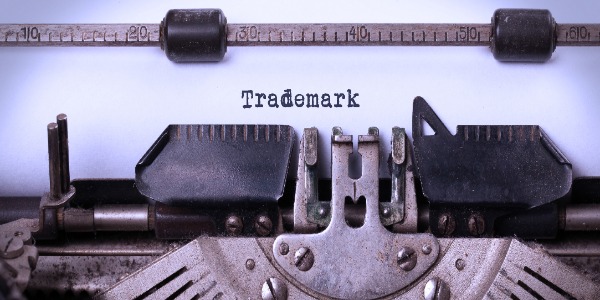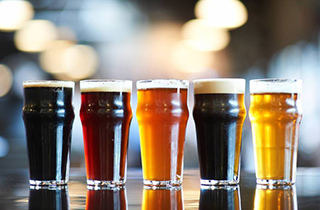Background
Cerevisiae Industries, which owns a trademark registration for BOXING BEAR BREWING, filed a petition to cancel Brawling Bear's registration for BRAWLING BEAR BREWING based on likelihood of confusion. Cerevisiae claimed priority and likelihood of confusion with Brawling Bear's mark, which includes a bear wearing boxing gloves and the words “Brawling Bear Brewing.” Additionally, Cerevisiae asserted common law rights to the mark, specifically for taproom services.
Procedural History
Brawling Bear denied the allegations made by Cerevisiae but did acknowledge the use of images featuring bears wearing boxing gloves in various colors.
During the trial period, Cerevisiae failed to provide any evidence in support of its claims. Nevertheless, the Respondent's motion for dismissal was denied due to the proper record of Cerevisiae's registration for BOXING BEAR BREWING COMPANY. Consequently, the case proceeded based on the validity of Cerevisiae's registration rather than the claimed common law rights.
Petitioner's Priority
Cerevisiae Industries had to prove its priority since both parties owned registrations. Cerevisiae filed its application for its BOXING BEAR BREWING COMPANY word mark on June 12, 2013, before Brawling Bear filed its June 6, 2016 intent-to-use application. Cerevisiae's priority was established based on the filing date of the underlying application, which matured into its pleaded registration. Respondent did not dispute petitioner's priority.
Likelihood of Confusion Factors
The Board conducted a thorough analysis of the DuPont factors in order to assess the likelihood of confusion between the marks. These factors encompass various aspects, including the similarity of the marks, relatedness of the goods or services, trade channels utilized, instances of actual confusion, consumer care levels, and the strength of the petitioner's mark.
Strength of Petitioner's Mark
The BOXING BEAR mark used by Cerevisiae is conceptually strong and arbitrary for beer. However, in the absence of supporting evidence such as sales records, advertising materials, or brand recognition, the mark could only rely on the presumption of validity.
Brawling Bear argued that the mark was weak due to the existence of several similar registered marks featuring bears, boxing, or fighting animals. However, the mere existence of these registrations does not necessarily prove commercial use or consumer recognition. Still, the registrations do indicate that the terms are commonly registered in connection with goods related to boxing or animals, potentially suggesting that the term "BOXING BEAR" may also be conceptually weak.
However, none of these third-party marks were as similar to the Respondent's BRAWLING BEAR mark as the Petitioner's BOXING BEAR mark was, so the value of these registrations as evidence was diminished in establishing the weakness of the Petitioner's mark. As such, the presumption of validity for the Petitioner's mark remained intact, as the evidence provided by the Respondent did not significantly undermine its conceptual or commercial strength.
Similarity of Marks
Cerevisiae argued that the words "boxing" and "brawling" were highly similar in meaning as synonyms for "fighting." Conversely, Brawling Bear contended that "boxing" referred specifically to an organized sport, while "brawling" referred to a noisy, uncontrolled quarrel or fight. Though the terms differ in degree, both refer to types of fighting.
The inclusion of the boxing bear image in the "BRAWLING BEAR" mark further reinforced the association with a "BOXING BEAR." The use of similar cadence and alliteration in both marks also contributed to their similar sound. When considered together, these elements can give consumers the impression that the marks are variations of each other from the same source. As such, this weighed toward likelihood of confusion among consumers.
Differing Connotations
Cerevisiae presented dictionary definitions which showed that "boxing" referred to an organized sport and "brawling" meant fighting noisily. Sports articles distinguish between "boxers" and "brawlers" as distinct fighting styles.
Brawling Bear argued that this showed the terms had different connotations and commercial impressions. However, the articles also showed that brawlers were a type of boxer, illustrating that the terms differed by degree. This still weighed toward confusion between the marks.
Disclaimed Words
The disclaimed words "BREWING" and "BREWING COMPANY" do little to differentiate the marks. The dominant terms are "BOXING BEAR" and "BRAWLING BEAR," which are highly similar. The overall cadence and alliteration of the full marks enhance their similarity. This also weighed toward likely confusion.
Actual Confusion
Petitioner produced a screenshot of a text message sent to one of its partners expressing concern about the similarity between the parties' marks. While this showed that the sender was familiar with the Petitioner's mark, it did not conclusively demonstrate actual confusion.
The extent of use of the marks in the marketplace was unknown, making it difficult to gauge if actual confusion had occurred. Furthermore, considering that the marks had only been used for a period of approximately three years, the opportunity for confusion was inherently limited.
In assessing the likelihood of confusion, it is not mandatory to prove actual instances of confusion. So while the presented evidence may not explicitly demonstrate actual confusion, the absence of such evidence does not necessarily undermine the possibility of confusion.
Relatedness of Goods and Services
The connection between Cerevisiae's beer and Brawling Bear's bar and pub services was not clearly established, as further evidence beyond the mere provision of beer in restaurants is required to establish a clear link between the goods and services involved. Notably, there was no indication that Brawling Bear functioned as a microbrewery or brewpub.
Brawling Bear, being a registrant, holds a presumption of validity that can only be refuted by a preponderance of evidence. However, the evidence presented in this case fell short in demonstrating that the goods and services in question were closely associated to the extent that consumers would mistakenly believe they originate from the same source.
Conclusion
The Board concluded that there is a likelihood of confusion between the registered mark of Petitioner, BOXING BEAR BREWING COMPANY, and the mark of Respondent, BRAWLING BEAR BREWING and Design, and that the third-party evidence provided by Brawling Bear did not weaken the conceptual or commercial strength of Cerevisiae Industries' mark.
Both the Petitioner's and Respondent's goods were considered identical and intended for sale through the same channels of trade to the same type of customers, and therefore met the criteria for likelihood of confusion as stipulated in Section 2(d) of the Lanham Act.
However, Cerevisiae Industries did not show by a preponderance of evidence that its beer was sufficiently related to Brawling Bear's bar and pub services for there to be a likelihood of confusion. The petition for cancellation was granted as to Respondent's beer goods and denied as to its bar and pub services.
From now on, Brawling Bear's Registration will be limited to its Class 43 services, specifically bar services and pubs.





